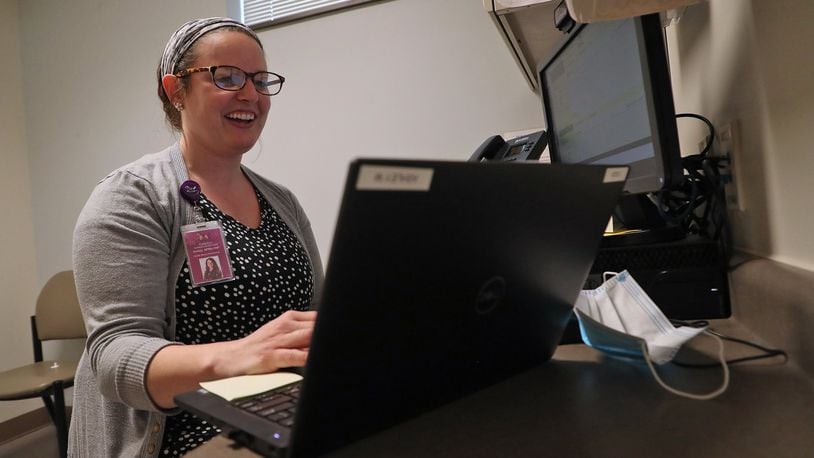For example, under the emergency rules, patients could get more care via the phone, which helped those without internet and no ability to video chat. In circumstances where initial meetings used to have to be face-to-face, eased rules meant even first visits could be done remotely.
“Our goal is to get more people into care and we appreciate the state helping to facilitate this,” said Jonas Thom, vice president of behavioral health at CareSource. The Dayton-based insurer manages over half of Ohio Medicaid managed care insurance plans.
Now Ohio Medicaid is starting the process to make permanent rules to continue expanded telehealth options throughout the COVID-19 pandemic and beyond. The proposed rules expand eligible telehealth services and eligible providers while relaxing barriers for patients accessing telehealth.
In March, in response to the pandemic, the DeWine administration and Ohio Medicaid had swiftly expanded options under emergency orders -- making changes that in normal times would have taken months of hearings and rulemaking. The rules allowed Medicaid doctors, specialists, therapists and a wide variety of practitioners to use telehealth for many services previously limited to in-person visitations. Medicaid also approved a wider array of telehealth communications modes including email, telephone, and commonly used internet conferencing platforms.
“During a time when families are juggling remote learning, work-from-home, and the additional stressors of life during a pandemic, ODM is committed to ensuring members can conveniently access quality healthcare services – especially mental health and addiction services” said Maureen Corcoran, director at Ohio Medicaid. “Expanding telehealth is the silver lining of the COVID-19 pandemic.”
Ohio Medicaid said in a statement that preliminary data shows that telehealth provided a much-needed lifeline to health care services during the initial months of the COVID-19 state of emergency—particularly for behavioral health services.
Since the telehealth coverage expansion in March, there have been at least 627,197 members using services totaling about 2.6 million claims. Of that number, 200,930 members received telehealth services from certified Ohio Department of Mental Health and Addiction Services behavioral health providers totaling about 1.28 million claims, and at least 480,305 Medicaid members received telehealth services from non-MHAS providers totaling 1.3 million claims.
That compares to an average of less than 1,000 telehealth claims per month for physical health services, and 4,000 telehealth claims per month for mental health and addiction services.
Thom said they are still early into analyzing the impact of the shift to more telehealth, but he is hopeful because the early data doesn’t show any appreciable clinical differences between the outcomes of members who get care via telehealth versus face-to-face services.
Thom said it appears to be many people who were already getting services who shifted to getting services remotely via telehealth, but “I’m really hopeful that one of the next gains we see is that more new people are going to engage with behavioral health treatment.”
The rule will be reviewed by the Joint Committee on Agency Rule Review and is on track to become effective as the current emergency rule expires. While the permanent rule change is considered, people can give public feedback to the Ohio Department of Medicaid by emailing rules@medicaid.ohio.gov.
About the Author
